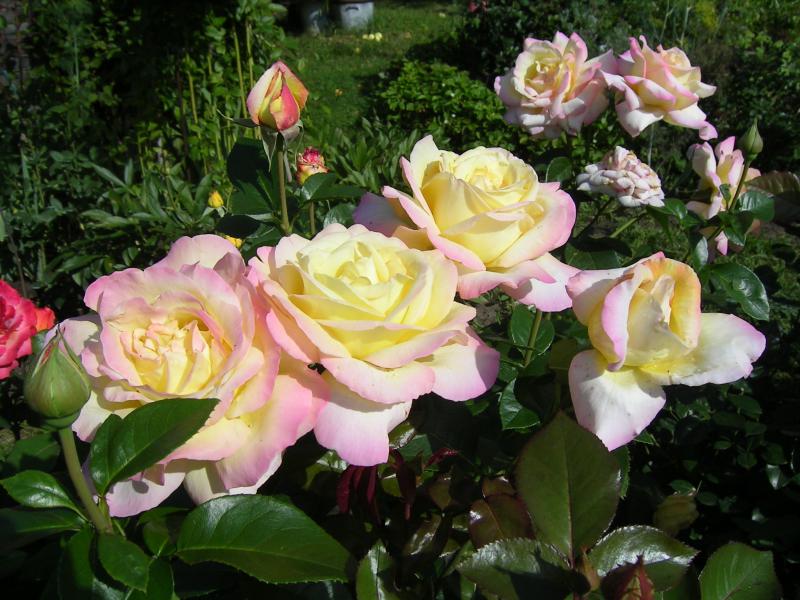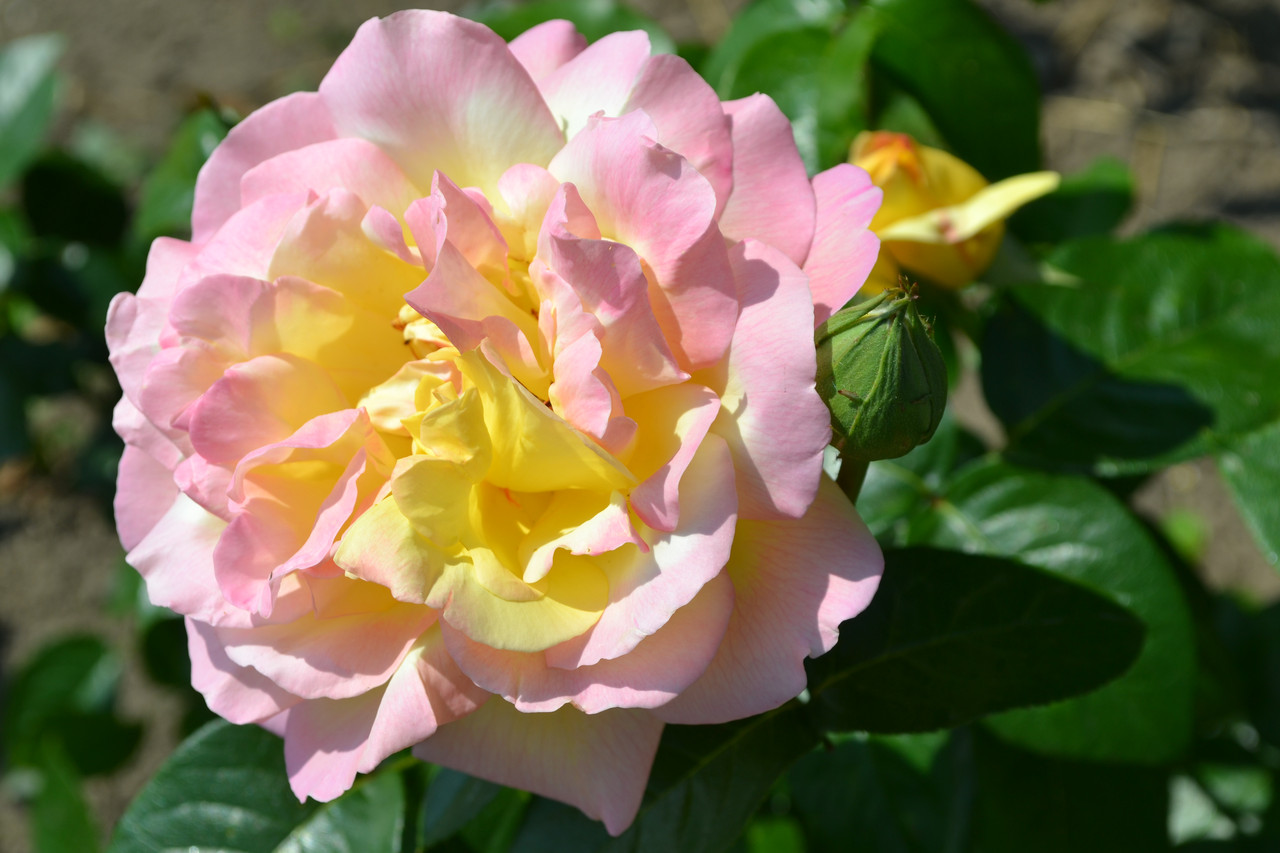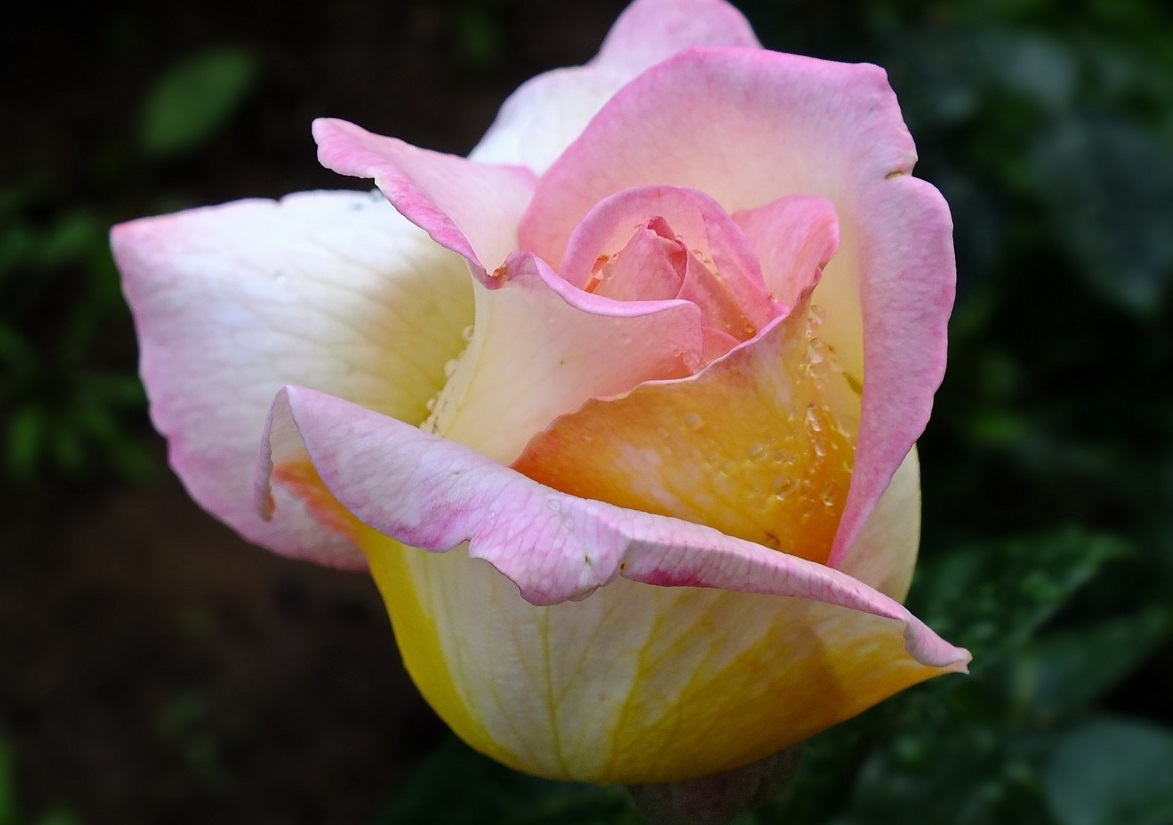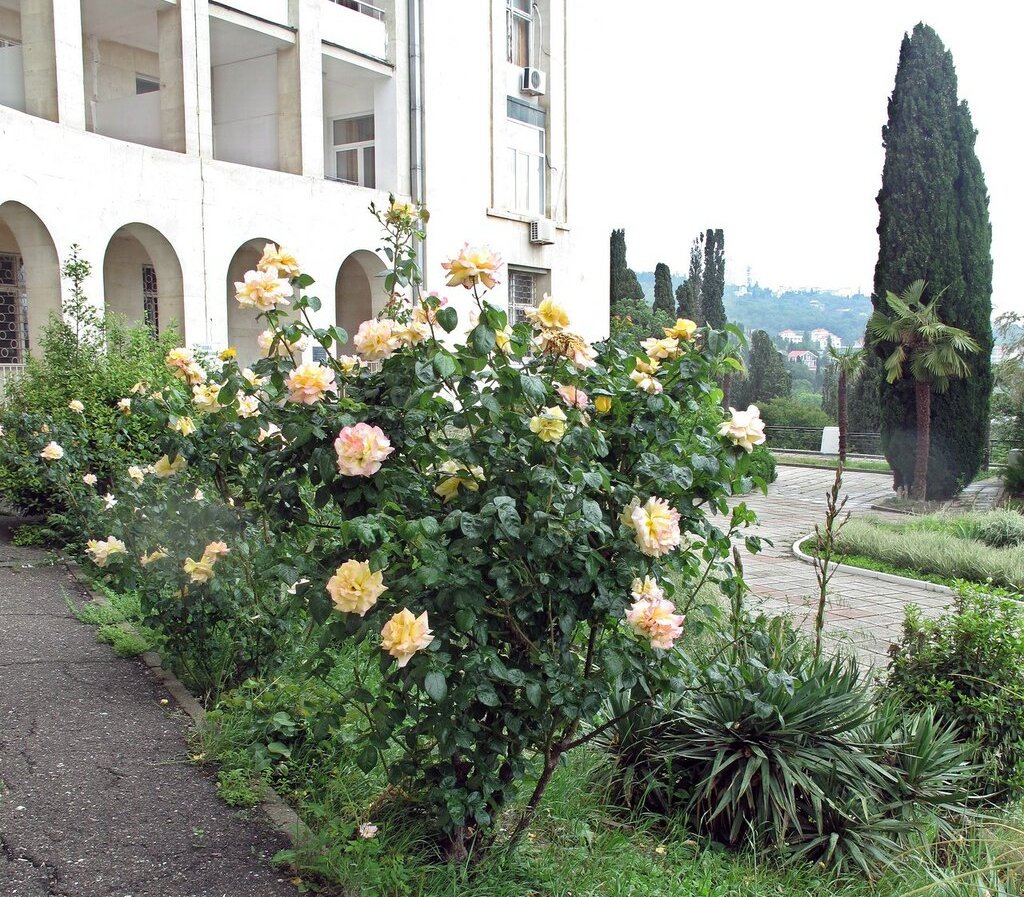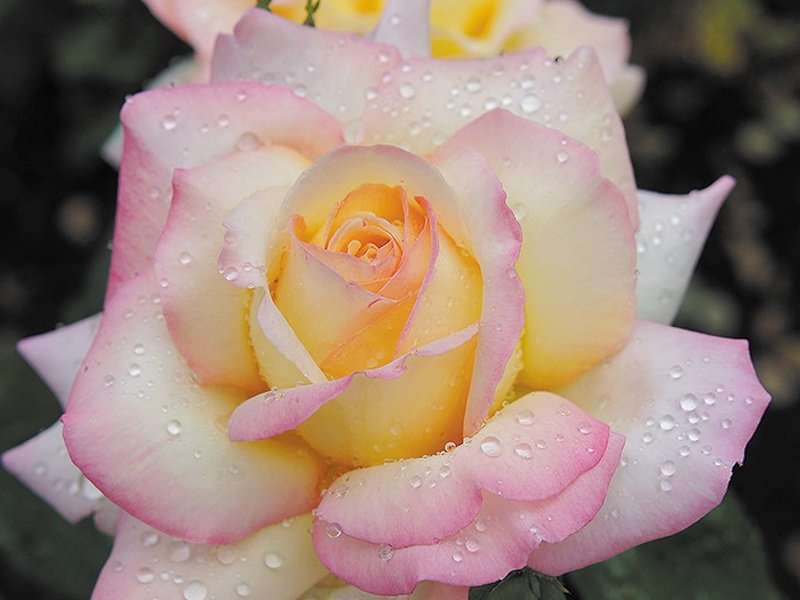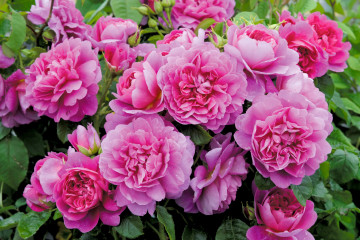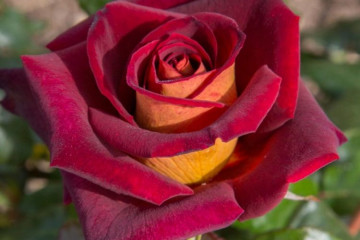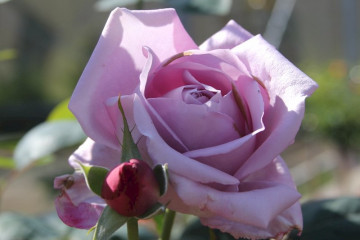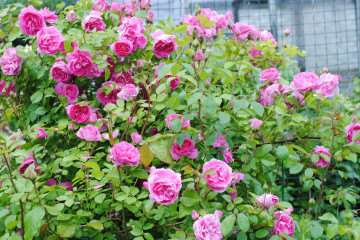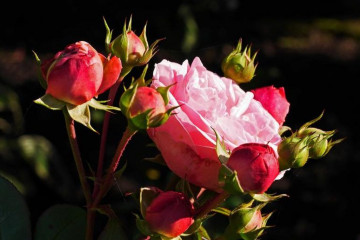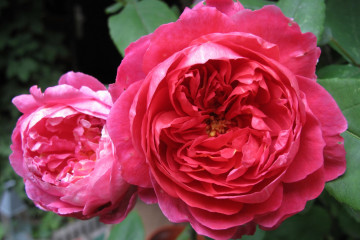Rose Gloria Dei (Gloria Dei) - description of the climbing variety
Content:
Rose Gloria Day is one of the most striking symbols of floriculture. Many rose lovers strive to get this variety in their greenhouses. Gloria is rightfully considered one of the best species bred in the last century.
Rose Gloria Dei (Peace, Gioia, rose Gloria Dei, Madame A. Meilland) - what is this variety, history of creation
She owes her birth to the French breeder Antoine Mayan from Lyon. It was he who, in the pre-war years, after long experiments, brought out a flower with a unique honey aroma and excellent aesthetic qualities.
Brief description and characteristics
Initially, Meiyang used 750 seedlings to develop a new rose variety, of which only 50 were qualitatively selected. As a result of selection work, a bush was obtained that gave only 3 viable buds of which only one successfully took root, which later became the ancestor of the Gloria Dei variety.
Gloria Day hybrid tea variety attracts with its beauty and delicate aroma of a flower. Blooms productively throughout the season. The bush is high, reaching a height of 1.5 meters. Powerful shoots with sparse sharp thorns and rich bright green leaves. Flowers are distinguished by a large bud - up to 6 cm in length and a large flower, when opening, reaching a diameter of 12-15 cm.
Among breeders and gardeners, it has several names - Gloria Dei, Madame Mayan, Peace, Gioia. In addition to the usual type, there is also a claming version - a climbing rose Gloria with powerful long shoots reaching a length of 2.5-3 meters.
Advantages and disadvantages of the variety
Unlike other varieties, the Gloria rose is unpretentious in habitat and undemanding to care for. Resistance to most diseases is a big advantage, especially for fungal infections and rot. The variety is well adapted to the conditions of harsh winters - it easily tolerates temperatures as low as -20 ℃.
The variety reproduces well both by cuttings and by grafting on decorative rose hips. Rose flowers have a unique color and aroma that change as the bud opens. Among the shortcomings, a somewhat belated flowering period is noted, starting almost from mid-summer.
Use in landscape design
A plant with such a bush size requires a special, individual approach. That is why landscape designers recommend assigning him a special corner of the garden in order to emphasize the beauty of the flower.
The plant looks great in plantings of roses with tall shoots, especially when the flowers are selected and form a color line, ranging from deep red flowers to pale white.
Climbing rose Gloria, when used as a hedge, looks great on a support, in the form of a lattice painted white.Such a hedge will not only create the foundations for plant growth, but also provide the zoning of the site.
Growing a flower, how to plant it in open ground
Fertile and organic-rich soils are considered favorable for the growth of roses. Fertile black soil and peat bogs saturated with manure are perfect for planting. Another important condition for growing a flower is the sufficiency of sunlight; without this, it is unlikely that it will be possible to obtain the indicators indicated in the description of the variety.
In what form is the landing
For planting, grown seedlings aged 1-2 years are used. It is allowed to breed the variety with seeds, cuttings, layering and grafting on the stems of decorative rose hips. On an industrial scale, the method of planting by cuttings and breeding by grafting are used. In small rose gardens, it is better to plant with cuttings, layering or inoculation. Seed breeding is rarely used today.
What time is the boarding
A favorable time for planting is considered to be from mid-April to mid-October. When planting in spring, it is possible to obtain a powerful vegetation of shoots throughout the season, but flowering will be belated, it will begin at the end of July.
Location selection
For planting, illuminated places with rich soil are selected. This type of roses, however, like the rest of the roses, is very jealous of the location. It is desirable that roses did not grow at all on the site for the previous 10 years. Legumes or asters may be optimal precursors.
When planting, the dimensions of the future bush are also taken into account - a height of 1.2-1.5 meters. Therefore, when laying out a flower bed, it is advisable to provide 2-2.5 square meters for one bush.
Roses feel great in sunny areas, they tolerate partial shade relatively easily. It is better not to plant in the shade - this will lead to exhaustion and wilting of the bush.
How to prepare the soil and flower for planting
At the planting site of the seedlings, a pit is made, into which a mixture of organic fertilizers, peat and fertile soil is applied. Before planting, the seedling is freed from the transport packaging and the root system is refreshed - they carefully cut the root system with garden shears, cutting off about 0.3-0.5 cm of the tips of the roots. This pruning provides an incentive to resume growth as soon as possible.
When refreshing, examine the cut of the roots; they should be white. After that, soaking is done in a solution of root or other growth stimulant for 4-6 hours.
Planting procedure step by step
Before planting, it is recommended to dig up and loosen the planting site in 5-7 days, add compost and infusion of organic fertilizers. After that, the site is mulched. On the day of planting, a planting pit of the required size is torn off and soil is prepared for backfill - a mixture of peat, compost and fertile soil.
In the center of the pit, a mound of fertile soil is poured. A seedling is installed on it. After installation, the roots must be spread to the sides in order to increase the area. Next, the pit is filled with prepared soil and watered.
When planting grafted roses on a rose hip, planting is done so that the grafting point is 5-7 cm below ground level. This technique will allow to ensure the growth of roots from the rose stem, eventually forming a full-fledged root system and minimizing the threat of the hybrid becoming a rosehip.
Plant care
The fact that Gloria Day Hybrid Tea Rose does not require special care does not mean that it does not need the usual care, such as watering, mulching and feeding.
Watering rules and humidity
The basic rule for watering a rose is to comply with the measure. The plant does not like drying out of the soil, but it is also important to prevent stagnation of water. For irrigation, settled warm water is taken. Do not pour water from a well. The rose does not accept sprinkling - water droplets can lead to burns on the sheets. In hot weather, the evening watering mode is selected.
Top dressing and soil quality
Top dressing is planned for the period of the change of seasons and before the start of each of the flowering periods. Spring usually falls in mid-April, autumn in the second half of October. For summer top dressing, it is recommended to apply organic fertilizers, and for autumn and spring - mineral fertilizers. In spring feeding, nitrogen fertilizers and humus are used, for October, phosphorus and potash fertilizers. In summer, organic fertilizers are used between flowering periods.
Pruning and replanting
During seasonal pruning, frozen shoots are removed in spring and the bush is prepared for vegetation. When pruning, shoots are removed 0.5-0.7 cm from the bud. This approach will make it possible to wake up dormant buds and increase the number of shoots.
During hygienic pruning, old shoots are removed, allowing new ones to grow vigorously.
When transplanting, it is recommended to clean the bush from old shoots and rejuvenate the root system. The transplant is usually done in mid-April and in October, so that the plant has time to restore roots before the onset of cold weather.
Features of wintering a flower
After the autumn pruning, before the onset of severe cold weather, it is recommended to cover the plant with spruce branches or straw. For wintering tall shoots, it is recommended to make a shelter made of agrofibre, which will protect the rose from wind and frost. In regions where the temperature drops below -20 ℃, it is imperative to cover the rose for the winter.
Blooming rose
Unlike other species, the Gloria rose blooms a little later than usual, so you should not stimulate the beginning of the flowering period.
Periods of activity and rest
During the growing season, the period of activity has its ups and downs. This is due to the fact that a rose has, on average, three flowering periods per season: June-July, August, September. The dormant period after summer flowering begins in the second half of October and lasts until the end of April.
Care during and after flowering
During flowering, hygienic pruning of the bush and top dressing are allowed. Hygienic pruning is done to revitalize the buds, grow shoots and remove dried stems.
Top dressing is carried out in the periods between flowering by introducing aqueous solutions of organic matter. It is allowed after the end of flowering to remove the buds in order to prevent the appearance of fruits.
What to do if it does not bloom, possible reasons
If the bush does not throw out buds at all, then, despite the growing season, the plant has not left the dormant period. To "wake up" the plant, it is necessary to cut the upper parts of the shoots at a distance of 0.5 cm from the point of growth.
The second reason for the delayed flowering of a rose may be disease. In this case, it is recommended to carry out the treatment with complex preparations and to make top dressing.
Flower propagation
Reproduction is carried out by growing seedlings from seeds, cuttings, layering and grafting of the cuttings onto rose hips. Approximately 1-1.5 years, while the effectiveness reaches only 30-40%.
When is it produced
The seeds are harvested at the end of the season when fruits appear in place of the buds. After drying and disinfecting the seeds, it is sown in mid-March in containers. The emergence of seedlings is expected by mid-April. Cuttings are harvested after the first flowering period in June-July.
Layers are formed in June, so that by October the bush is ready for transplant with a normal root system.
It is better to graft roses in July-August, this is the most favorable time for rootstock of rose cuttings on rose hips.
Detailed description
For rooting, cuttings are selected with a length of 8-10 cm with 5-7 living and healthy buds. The procedure is done directly at the landing site, with the lower 4-5 buds buried in the ground. After that, the cutting is watered abundantly and covered with a jar. Under normal conditions, a viable young bush appears in 21-28 days.
Layers are formed on young shoots in the month of June. To speed up the rooting process on the shoot, the buds are cut. The shoot is pressed to the ground so that there is a 10-12 cm long section under the soil layer. The top of the shoot is fixed on the support vertically. A mound of earth 10-12 cm high is poured over the fixed site. The young bush will be ready for transplanting in the fall.
Diseases, pests and ways to control them
The most dangerous for the plant are aphids, thrips, nematodes and spider mites. When signs of damage to the bush by pests appear, immediate treatment with insecticides is done. Powdery mildew, rust, fungal diseases of the rose are rarely affected. But in case of damage, it is recommended to treat the plant with complex preparations to protect against plant diseases.
Observing these simple rules for caring for a plant, you can get a beautiful healthy rose bush that will delight the owner for more than one year. Experienced gardeners say that Gloria should be in the collection of every self-respecting rose lover.
